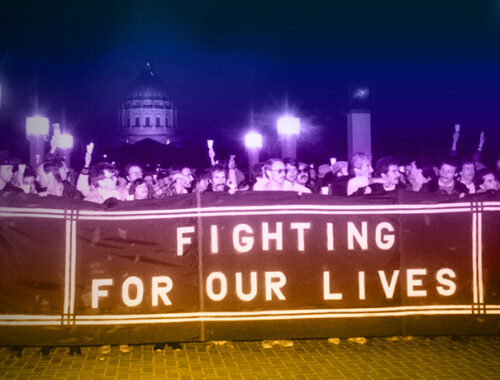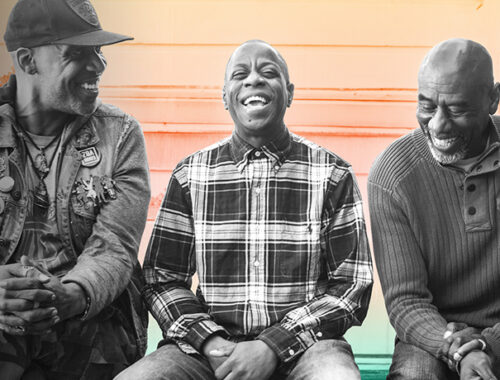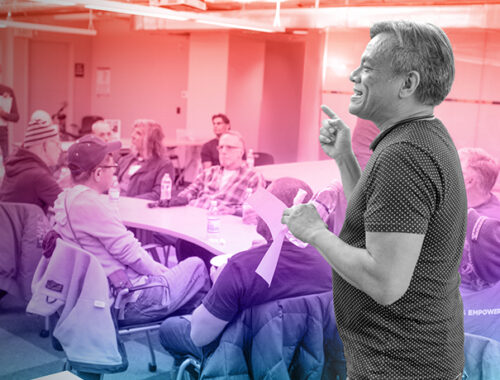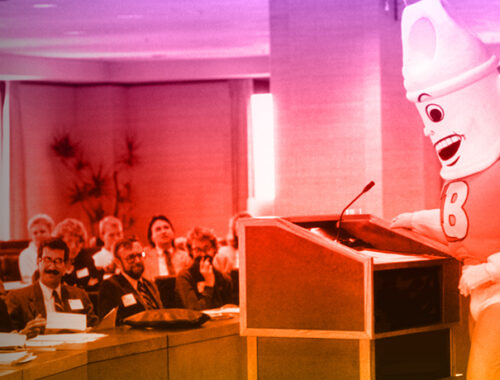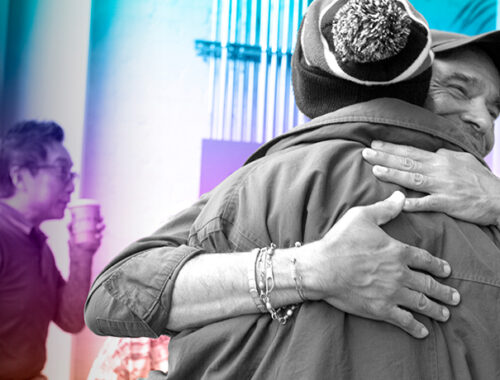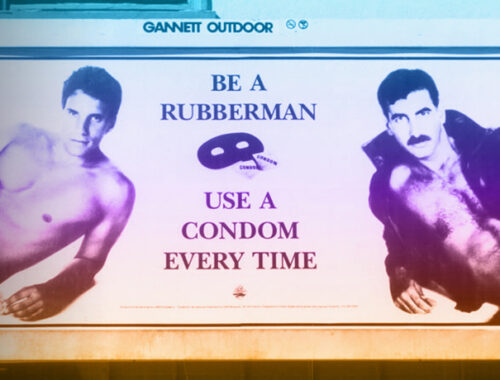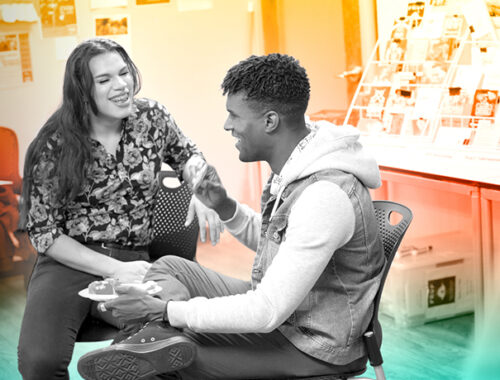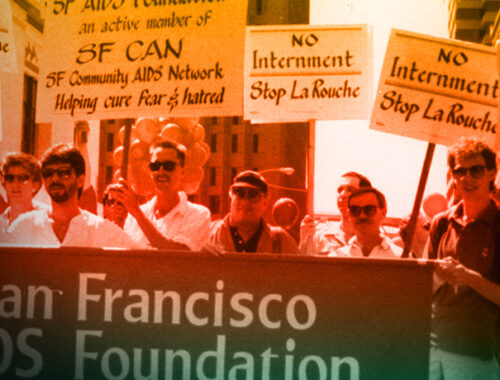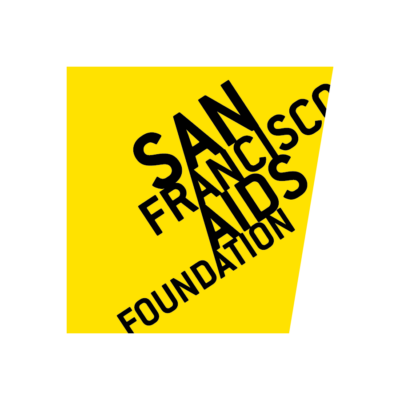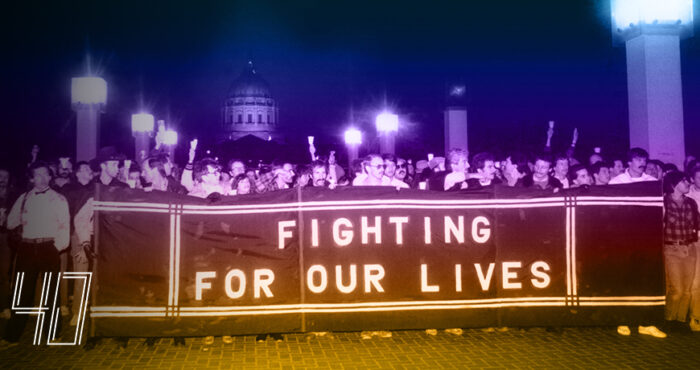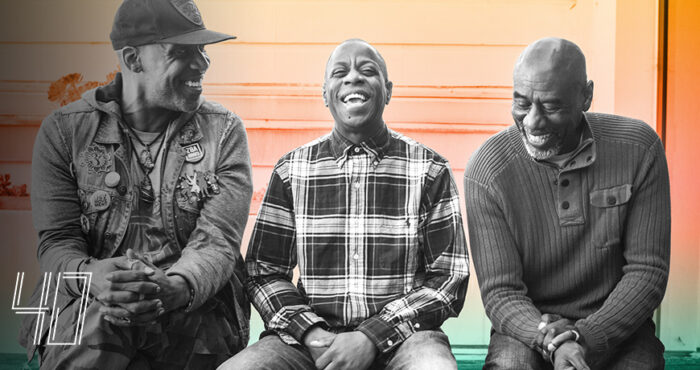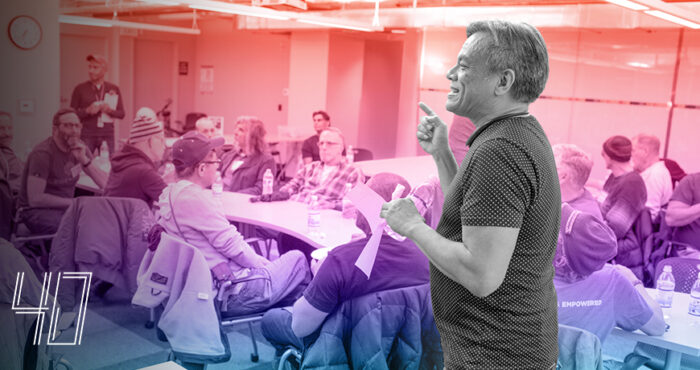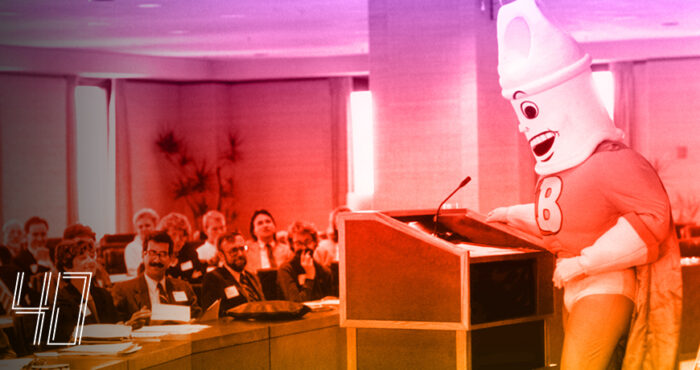Honoring Volunteers from 1982 to Today
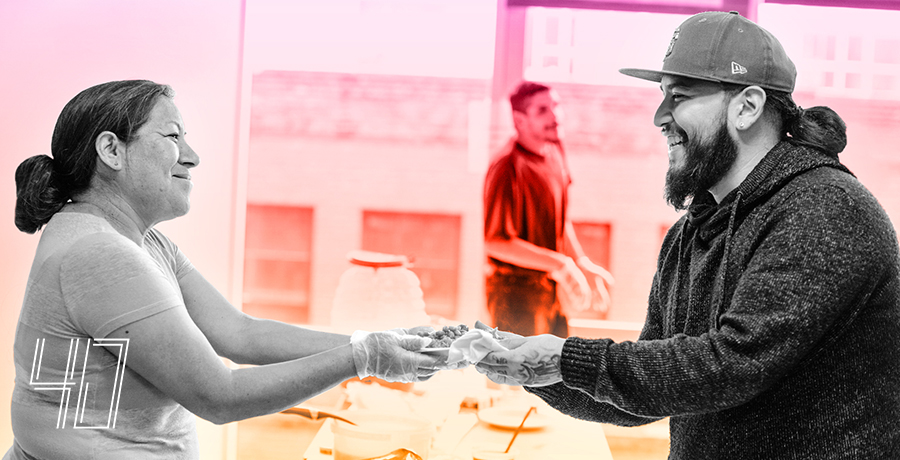
This article was produced in honor of San Francisco AIDS Foundation’s 40th anniversary, which we are commemorating in 2022.
Since the beginning of the AIDS epidemic, volunteers have stepped up to provide care to their friends, lovers, and community.
In the early days of AIDS, when many turned their backs on people suffering from a strange new disease, the LGBTQ community and allies came together to build up services, programs, organizations, and funding. At SFAF, many of our programs and services were started by volunteers who were part of the communities they aimed to serve. Queer women have led (and continue to lead) in the response to HIV in San Francisco and globally.
“Volunteers are how we got where we are today,” said Robert Quon, MD, a 23-year AIDS/LifeCycle (and California AIDS Ride) participant and 6-year member of SFAF’s Board of Directors. “The foundation really was built on all of the hours and time donated by every single person who has ever volunteered. Those people have formed the fabric of the foundation.”
“We were born out of volunteerism,” said Jody Schaffer, director of Volunteer Services. “We were born out of compassion, and caring for each other in the community. And that legacy remains.”
The first service of the foundation, the Hotline, was operated entirely by volunteers who provided what information they could to callers. Over the years, as the foundation’s services were formalized and expanded, Hotline volunteers would take 3-hour shifts between 9 am – 9 pm to answer questions (in a handful of different languages) about treatments and services, and to give referrals.
“There was a multi-day training that volunteers went through that gave an overview of the latest information on AIDS,” said Pat Christen, SFAF’s fourth Executive Director. “You would then role play Hotline calls to become familiar with how to speak with people who called in, providing the most current information available at the time. After training, volunteers signed up for shifts–some people would take one shift a week and others would take more. During your shift, you ended up taking calls from, literally, all over the world. There was no internet yet, so all of the information was collected, analyzed, and cataloged in large hard copy binders, updated daily, for use by the volunteers. It was a remarkable effort.”
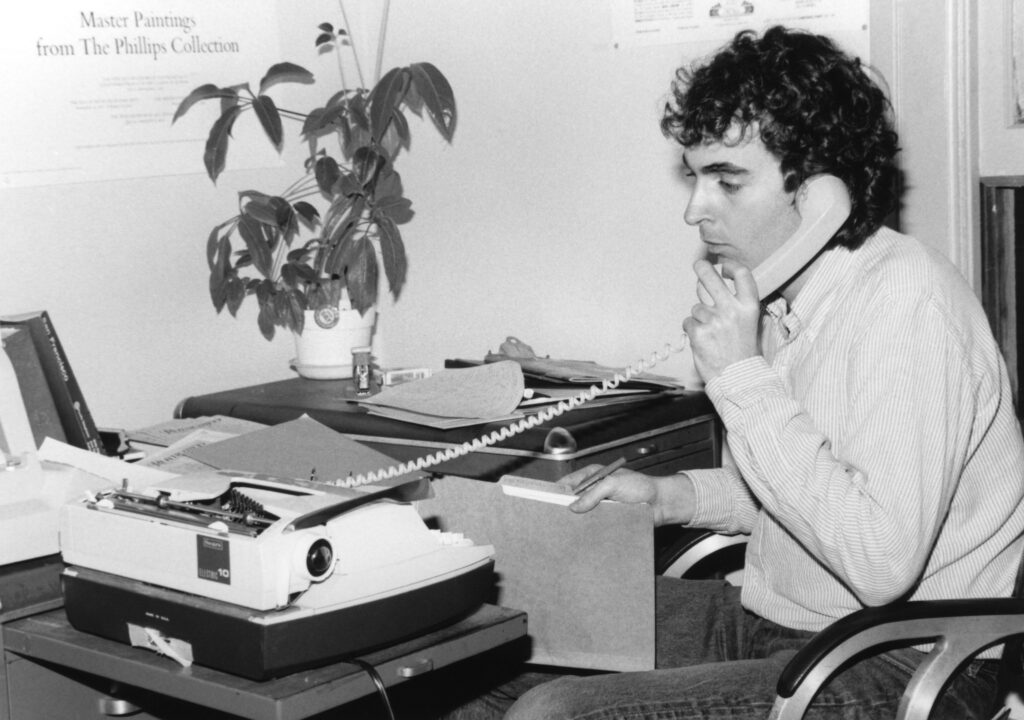
For the first two years of our organization’s existence, from 1982 to 1984, most services and much of the work of our organization was provided by volunteers. It wasn’t until 1984, when the SF Department of Public Health stepped in to help provide professional social services coordination and funding that SFAF was able to hire a few more staff to help keep pace with the demand for services.
Volunteers also played (and continue to play) a significant role in our harm reduction work–staffing needle exchanges (now known as syringe access programs) and doing overdose prevention work.
Jody Schaffer, the director of Volunteer Services, said that in the current day and age, there are usually around 300 people every year who regularly volunteer their time and effort across the foundation. With group volunteers, that number rises to nearly 3,500.
Volunteers are involved in many aspects of SFAF programs and services–doing everything from helping set up and serve food at group events, to delivering HIV test results as trained test counselors. People who volunteer as part of a group help prepare hygiene or harm reduction kits, or prepare materials for fundraising events. Community events like Santa Skivvies and Dining Out For Life also bring out community volunteers. Volunteers who are part of the activist group HIV Advocacy Network bring awareness to issues facing our community, and press elected officials for policy change.
“I wouldn’t describe volunteering as simply ‘fun,’” said Schaffer, who volunteers regularly with Syringe Access Services in addition to leading Volunteer Services for SFAF. “It can be difficult, if you’re a test counselor and you’re having tough conversations about sexual health or delivering an HIV test result. Or it can be challenging if you’re serving a community that is impacted by trauma. But volunteering is transformative. It’s a privilege to walk alongside people in their journey and have a direct impact.”
For AIDS/LifeCycle, “Roadies” volunteer the week of the event and in preparations leading up to the Ride–doing everything from setting up camps, to providing medical services, to preparing and serving food. Training Ride Leaders and Riders dedicate a week of their year (plus additional time training beforehand) to cycling hundreds of miles to raise funds for our services.
Dr. Quon’s involvement as a volunteer began in 1999, when he signed up to participate in the California AIDS Ride (the predecessor to AIDS/LifeCycle).
“It started for me as just a physical challenge. I was not into long-distance cycling, but I had a friend who convinced me to join. I was still at the end of my residency, and really didn’t know a lot of people who had a lot of money to give. I remember being worried about raising the money to join. But that year I raised around $5,000. It was a shock for me.”
This year marks Dr. Quon’s 23rd Ride. For the 23rd time, he will cycle down the coast from San Francisco to Los Angeles (that’s more than 12,500 miles for anyone counting)–and for the 23rd time, he will raise funds to help bring an end to the AIDS crisis and raise awareness about HIV and AIDS.
“We all have a role to play,” he said. “I see this as a way to take care of my community–a community who, for a long time, have been either marginalized or forgotten.”
Commemorating 40 years
Join us every month in 2022 as we mark 40 years of service to the community.
On this occasion, we take a look back and share our storied history of leadership in HIV prevention, education, advocacy, and care. We celebrate the remarkable individuals at SFAF and in the community who have pushed forward innovation with compassion. We honor those we have lost to HIV along the way. We also reflect on the many ways our organization has grown and evolved to respond to the changing landscape of HIV and the changing needs of our community.
As we look back on our history, we approach the future with hope, and with a renewed sense of all that our passion and ingenuity can bring to enact positive change in our community. We will act in bold and brave ways to reach an end to the AIDS epidemic, and ensure that health justice is achieved for all of us living with or at risk for HIV.
After 40 years, we will not lose sight of our commitment to our community, and our vision for a brighter future.






